The Sand Rover chassis
The Sand Rover has a reputation of being fragile: it is easy to guess the delicate bodyshell can't resist to heavy shocks, especially when you consider the model was mainy targeted at beginners. However, even for skilled drivers, the overall bodyshell layout doesn't forgive any mistake.
Nevertheless, the bodyshell is not the unique element that participates to the Sand Rover's reputation: the chassis shared with the Holiday Buggy also suffers from weaknesses, especially the front drivetrain and the gearbox.
View from above
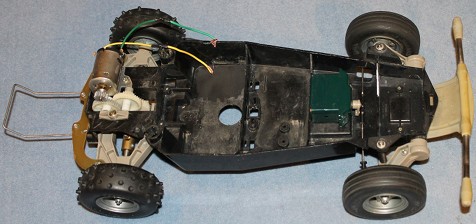
View from below
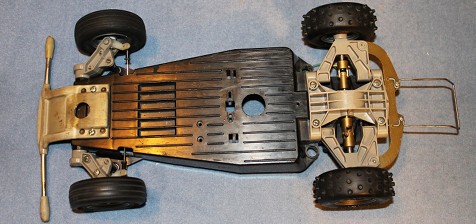
The front drivetrain weak point
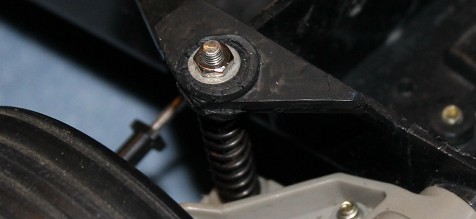
The open-air gearbox
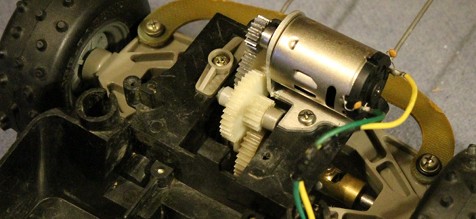
At the front, the upper damper mounts molded into the chassis bathtub are the weak point: they are thin and the plastic quality can't resist the constraints from the dampers.
At the rear, the transmission is open-air: it is pretty difficult to imagine why Tamiya designers went for this solution on an off-road vehicle, especially considering the sand is its favorite playground. Hopefully, Tamiya recommends in the manual not to grease the pinions in order to avoid the grease turns into an abrasive paste as soon as dust and pebbles get into the transmission. Nevertheless, this can't avoid the gears to wear rapidly. This is the reason why I decided to install a lexan cover found on internet.
The lexan cover

Once installed

This basic solution is efficient and already existed back into the 80's since it was listed on TMS 1984 catalog:
Click on the image to display it full-size
Back to the front of the chassis: as per the manual, the steering servo has to be fixed with double-sided tape inside the chassis. I hate this solution: it is already a problem when your electronic speed controller goes off. When the steering servo goes of, you loose any control over the vehicle. Well, I needed another solution.
No need to re-invent the wheel, lets use existing solutions:
Two holes drilled in the chassis
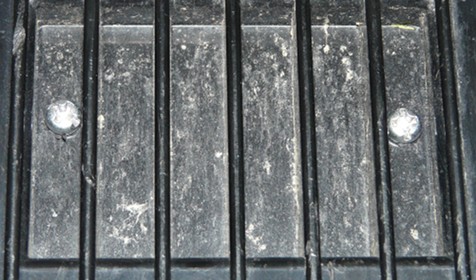
Two servo mounts: classic
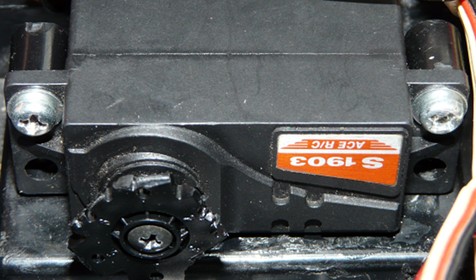
Nothing sophisticated here, but the final assembly is obviously more secure.
First Runs
Even if the first wheel spins were mostly to test the model, I could get quite a precise idea about the Sand Rover. But it was also an opportunity to shoot photos thanks to my friend Teamneogordini from RC for Old Nuts.
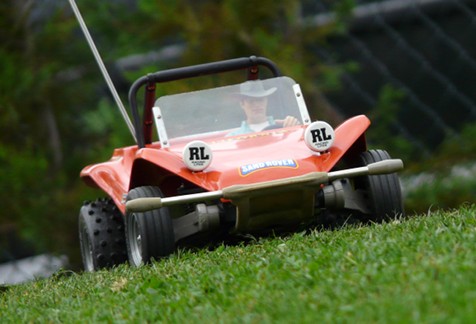

As shown on the second photo, the gear cover was not yet installed. Nothing to worry about since the model was only driven on freshly mowed grass. On dirt or sand, it is easy to imagine how the pinions would have suffered...
Driving and watching this splendid model is a great pleasure that comes with a very noisy sensation. The transmission "sings" such a song that the driver of any other model would immediately stop as he would worry not to find a single intact tooth in his model tranny. The open-air transmission is probably one of the reasons for this.
As for the general handling, despite the 15T motor pinion (a 18T can be installed for a better top speed), the model is pretty quick with the stock 380 type motor. In fact, it is quick enough considering the overall fragility of the model. Saying that the suspension doesn't exist would be a lie; comparing it to a tree trunk would be more realistic though. To finish with the chassis handling, the lack of differential makes the steering quite imprecise: when accelerating, the Sand Rover goes straight even when the wheels are turned. OK, this is a little bit exaggerated: lets say driving this model requires anticipation. Tons.
To make it short, driving this chassis is like driving a boat on wheels (but with a tuning-show ready audio system) ![]()
The previous paragraph is ironic on purpose because the pleasure to drive a Sand Rover is everything but performance. Driving a Sand Rover is all about pleasure to watch it riding. The chassis handling, as bad can it be, does provide pleasure too: the driver never forgets he is driving vintage.
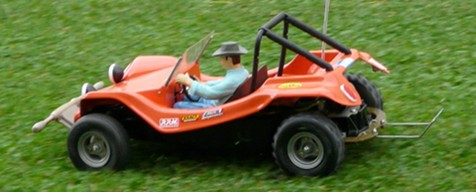
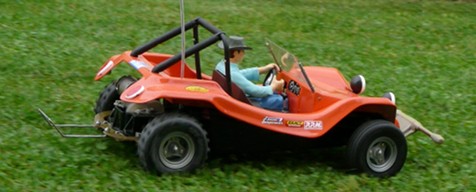
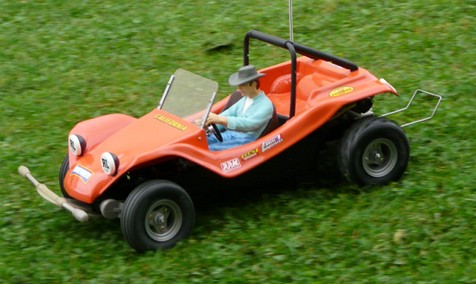
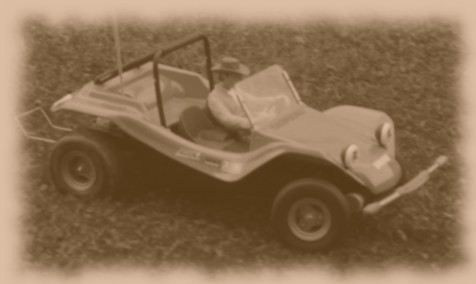
Unfortunately, the photos don't show the great pleasure to drive this model. Forget about speed, forget the neat racing lines and the search of the chassis limits: the Sand Rover was never made for that. Its role is to provide pleasure and to offer the driver the freedom to control the model only to watch it riding without any rule and no track to follow.
As simple as that. The driving of this model is the exact replica of the full-size buggy's. As such, the Sand Rover can be considered as a masterpiece in Tamiya's range of products.





